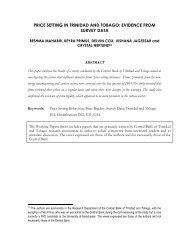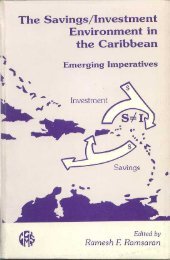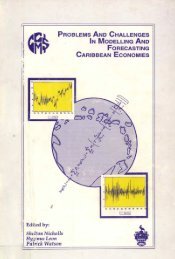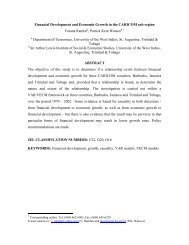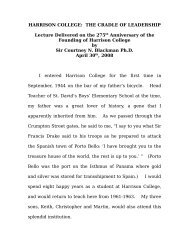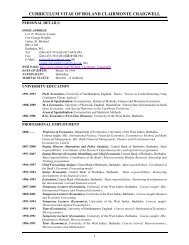The Observed Effects of Money Laundering for Jamaica - Caribbean ...
The Observed Effects of Money Laundering for Jamaica - Caribbean ...
The Observed Effects of Money Laundering for Jamaica - Caribbean ...
Create successful ePaper yourself
Turn your PDF publications into a flip-book with our unique Google optimized e-Paper software.
<strong>The</strong> additive values <strong>of</strong> these two variables were used as<br />
fraud and drug crimes necessitate a lot <strong>of</strong> money laundering(Unger<br />
2005). <strong>The</strong>re<strong>for</strong>e if there is an increase <strong>of</strong> any <strong>of</strong> these two crimes will<br />
imply that there is an increase <strong>of</strong> money laundering within <strong>Jamaica</strong>.<br />
Furthermore the large amounts <strong>of</strong> illegal funds gained from these<br />
activities need to be legitimize hence the need to launder these funds.<br />
EMPIRICAL MODEL<br />
Augmented Dickey Fuller<br />
Firstly, to established the presence <strong>of</strong> a unit root in this dataset by<br />
per<strong>for</strong>ming the Augmented Dickey Fuller test. <strong>The</strong> ADF test will be<br />
per<strong>for</strong>med using the following regression model <strong>for</strong> each variable.<br />
t−<br />
1<br />
n<br />
∑<br />
s=<br />
1<br />
ΔY<br />
= constan<br />
t + ∂Y<br />
+ _ T + ∂ ΔY<br />
+ ε<br />
t<br />
Where Yt is the time series, εt is the residual and T is the time trend.<br />
H : δ = 0<br />
0<br />
H : δ ≠ 0<br />
1<br />
<strong>The</strong> null hypothesis is that the variables have a unit root, if we have a<br />
unit root the dataset is not stationary. This follows the distribution <strong>of</strong><br />
1<br />
t−s<br />
t<br />
28



